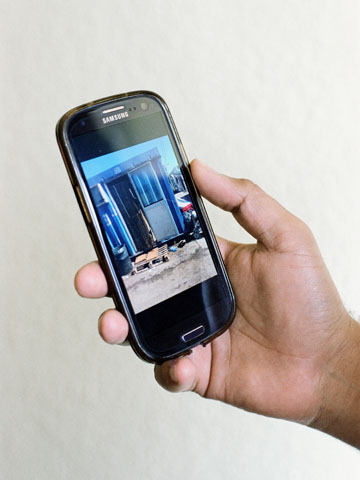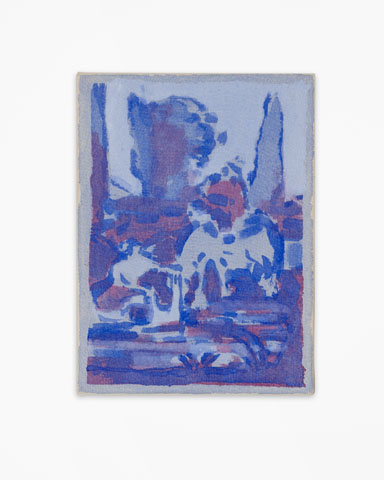1 Museum, 4 Artists, 50 Hertz
- Christian Hain
- Jul 22, 2017
- 5 min read
Updated: Mar 25, 2020
(Berlin.) Once again, I came unprepared. All I knew was, there’s an art exhibition at a company called “50 Hertz”. The invitation was signed by the government authority in charge of most public Berlin art venues, and the address a stone’s throw from Hamburger Bahnhof Museum. I’d never heard of 50 Hertz before, my scientific knowledge reaches its limits at “hertz is something to do with ... well, something technical - megahertz is speed in computers!” Having been equipped with an impressive e-badge to add to the slightly less impressive “press” sticker, and having passed the security turnstile, I learned, 50 Hertz – the company, not the scientific unit – is a “transmission system operator”. That’s something to do with electricity. It sounded like start-up CEOs driving Bugatti in Monaco, and so appeared the stylish new building, with an array of conference rooms with electronic reservation panels at each door (no, I did not book a room, or many), but later research told a different story, of former Eastern German state owned suppliers being taken over by first one, then another foreign giant, and apparently there’s some hedgefonds involved. So it’s rather bureaucrats in black suits.
I don’t know what a “Arbeitsdirektor” (literally: “work director”) does, yet she was there, in person to welcome the press and pretentious bloggers. Must be boss of HR. 50 Hertz was created in 1884-86/1990/2002 (this reads truly artistic!), and recently, somebody in management felt like contemporary art would be a great addition to their communication strategy. Hamburger Bahnhof was happy to assist in the endeavour, the museum also “profits much from the cooperation”.
- “Art? Fine, but not alone. Nobody cares about art, find me a wider approach ... Youth! That’s it. Everybody loves youth. Our future is electric.” And thus they visited – not in person, but at this point, HHBhf’s expertise comes into play – diploma shows of art schools in four German cities. Cities with 50 Hz offices. Then selected four “positions” (not “artists”, they learned the vocabulary quick) for a show in Berlin. By pure coincidence, obviously, it’s only female artists, and they’re not without talent indeed.
Rundgang’s - that’s the title, translates to tour/circuit/walkabout/stroll - most impressive position comes from Asana Fujukawa. The Hamburg graduated Japanese wrote a comic book strikethrough graphic novel on villagers gradually turning into Ents, no, that’s Lord of the Rings, in art it’s just: “trees”. The curse unfolds slowly enough to leave them time for the creation of pottery to store their human souls (wood burns – ash belongs in an urn?). No words about kodamas or kamis, and Japanese animism, here. But maybe it would be worthwhile to read that graphics novel in full, also to learn who will put the souls in the finished earthenware, and how, and when exactly? Fujukawa furthermore created ceramics of the human-tree chimeras who by the way are supposed to have been woodcutters (not in artistic sense), people who destroy nature for a living. Now their work is taking over their soul in an unheard of, literal, way (and even with a double meaning – they’re working the clay now). The story of an unwilled transformation, but who will be able to refuse cyborgization tomorrow?
On first sight of the sculptures, a western audience might feel reminded of Western fairy tales, Struwwelpeter, Hansel and Gretel lost in the woods; it might be an intended side-effect.
Cosima zu Knyphausen is a painter, and as far as I’m concerned, not worse than those at any of the innumerable Berlin painting galleries. It would not come as a surprise to see her at Eigen&Art soon. Her topic is a Chilean national icon, the painting of a horseman and a washerwoman, painted in 1835 by German travelling painter Johann Moritz “Juan Mauricio” Rugendas. Zu Knyphausen, who was born in Texas and grew up in Chile, reproduced it in many different styles and detail views. Intercultural, much.
What I took for an engine, or wind power related something, was indeed a “Tesla coil” (something related to electricity, “a lava lamp with lightning”), albeit plastic fake. Emma Adler installed it opposite a screen that, we are led to believe, broadcasts a live image. But every ten minutes or so, the image changes, and an active Tesla thingy is playing a song (I’d love to tell you which one, but I’ve lost the hand-out with notes and score). Nobody with basic art knowledge can escape the Nam June Paik association. The Buddha is replaced with technology, by science the not ersatz but new religion, with its own sacred language and priestly caste.
Don’t miss a third part to the work, a portrait of Austrian Jewish Socialist journalist Emma Adler (1858-1935) posing as a Madonna, on the back of a wall behind the Tesla “sculpture”, almost outside the official exhibition space. No, a photo of the contemporary artist Emma Adler posing as a historical portrait painting of the Austrian Jewish Socialist journalist Emma Adler (1858-1935) posing as a Madonna. That work had been ordered for a church in a small German (Austrian?) town, and, according to legend, the population who at first was rather hostile, fell in love with it once a lightning had destroyed the church but left the painting unharmed. Lightning->electricity? Emma Adler, the journalist, was born Emma Braun, and also published as Marion Lorm and Helene Erdmann, whereas Emma Adler, the contemporary artist, – well, there’s no publically available information as to what name is written on her birth certificate. But if she is interested in a humble advice: That name is not perfect for your own online visibility.
A work with many aspects, an artist with a complex mind. The title is EEEF#GE, and playing around in Photoshop, I found, the hex colour code #00EEEF gives a gentle turquoise; if Emma Adler was an established artist, or a Berlin painting gallerist, I’d add: “looking a lot like Porsche’s ‘Miami Blue’ paintwork”. #GE is not a colour, but “General Electric”. Oh, and Google returns for “EEEF#GE” the .pdf of an Indian student’s mathematical dissertation (top ranked), and books with titles such as “Fundamentals of Magnetism” and “Jewish Wit and Wisdom”.
Finally, photos by Susanne Keichel who portrays modern migration. She is less interested in faces but shows circumstances instead: trucks, camps, migrants’ mobile phones, demonstration banners from anti migration activists and refugees-welcomers alike. The Islam hostile PEGIDA proclaims ‘identity first, tolerance second’ (in more, and more vulgar, words) while a competing sign from the other side lists all kinds of VERBOTEN, or, to be precise, what they don’t want, culminating in “No bad –isms” (so there are good ones, too?). Follows the interdiction of cameras, alcohol and drugs. But what do they want?
A third sign tells to “Fight An Equal Life.” That’s great. But who wrote it? And what does it mean? I admit, at first I misread it, I saw only what I wanted to see, and noted: “’Fight An Unequal Life.’ – Why not ‘Fight Life’? ‘Fight liberty.’ ‘Fight creativity, culture, anything that makes life worth living.’ And the leaders writing these signs always the ones with the biggest egos of all ...” In short, I once more fell into conservative ramblings. “Fight An Equal Life” is somehow different. Almost the individualist’s, the libertarian’s, credo. Although I’d put it less aggressive: “Fight to be unequal”, or “Fight for the right to be unequal”. But overall, I’m fine with it. Still not with PEGIDA, if it was them who wrote it. Maybe it was a migrant trying to express: “Fight a such life/a life like this (i.e. “mine”, i.e. “his”).”
I like the photographer for not forcing one view, one – equalized – interpretation, upon the recipient. It’s almost a historian’s work.
The cooperation “project” between 50 Hertz and HHBhf is set to continue for three years, with another four-weeks-exhibition every summer. The artists get a (small) catalogue and an entry to their CV with the keyword Hamburger Bahnhof, but neither institution nor company will buy the works. If you are a manager at 50 Hertz and still unsure what to do with last year’s bonus... they won’t refuse, I’m sure!
Rundgang 50 Hertz, 50 Hertz Company Headquarters, Berlin, 19 July-13 August 2017
World of Arts Magazine - Contemporary Art Criticism










Comments